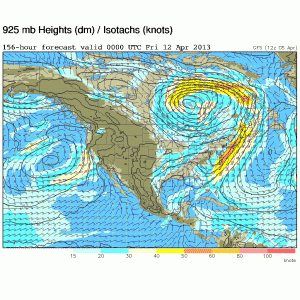I got a reply on my last post from “barabooHills” and felt a response required a visual aid, so I’m writing a new post to that effect. Here’s the original reply:
I saw on birdcast there are some chances for overshoot next week in our area and I was hoping you might share some thoughts/predictions in that regard. P.S. I am obsessed with checking this site every morning (Max’s site too); fascinating stuff!
First of all, if you don’t know what Birdcast is, make sure you head on over to http://birdcast.info when you’re done here. While the forecast for the region does mention the possibility of overshoots, it was intended for the Northeastern US, which is lumped with the Midwest in the forecasts. Regardless, it’s a fascinating subject and one worth considering wherever you reside. The text he is referring to from birdcast is as follows:
By the end of the forecast period, an interesting scenario is in play: a strong low pressure system moving across the region creates strong southerly flow from the eastern Caribbean north up the Atlantic seaboard. Birders should watch the progression of this front carefully, as this could create a spring overshoot situation for more typically southern species occurring farther north than expected in southeastern New York, coastal New England and the Atlantic Maritimes of Canada.
The strong low pressure system is forecast to move across James Bay, Canada, on Thursday night, creating a strong frontal boundary extending down the eastern seaboard to the Caribbean. It’s easiest if you look at the forecast wind map for 7:00PM Central Time (or 0000 Friday, UTC).

If you click on it, it’ll open full-size and you can really see what I’m talking about. If this scenario plays out, and at this point it’s too early to tell, strong assistive winds (S/SE) over the Caribbean should trigger nocturnal migrants to take flight heading for Florida and the Southeastern Coastal Plain. If the front moves offshore overnight, though, and the winds are strong enough to entrain birds, some of these birds will be conveyed farther north than they intended and subsequently deposited wherever they can reach land, even as far as the Canadian Maritimes (as pointed out by ornithologist Andrew Farnsworth on birdcast.info).
Thanks for the great question, and make sure to keep an eye on this system as it moves across the region over the next few days.
Good birding and weather watching!
David